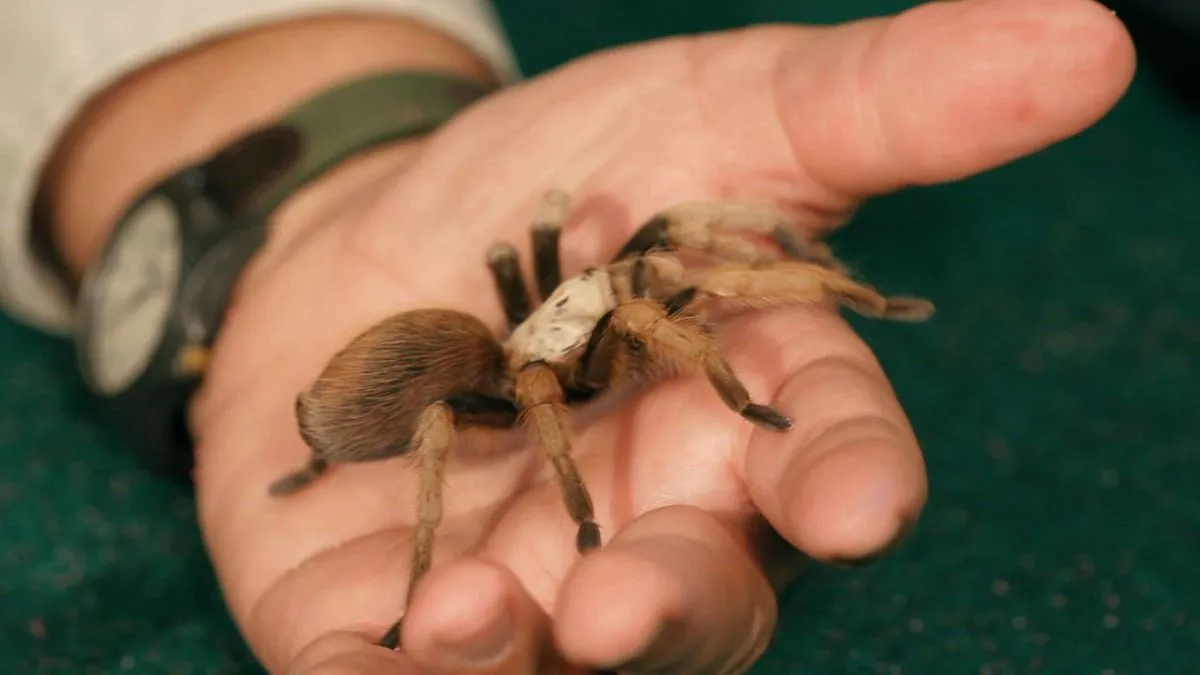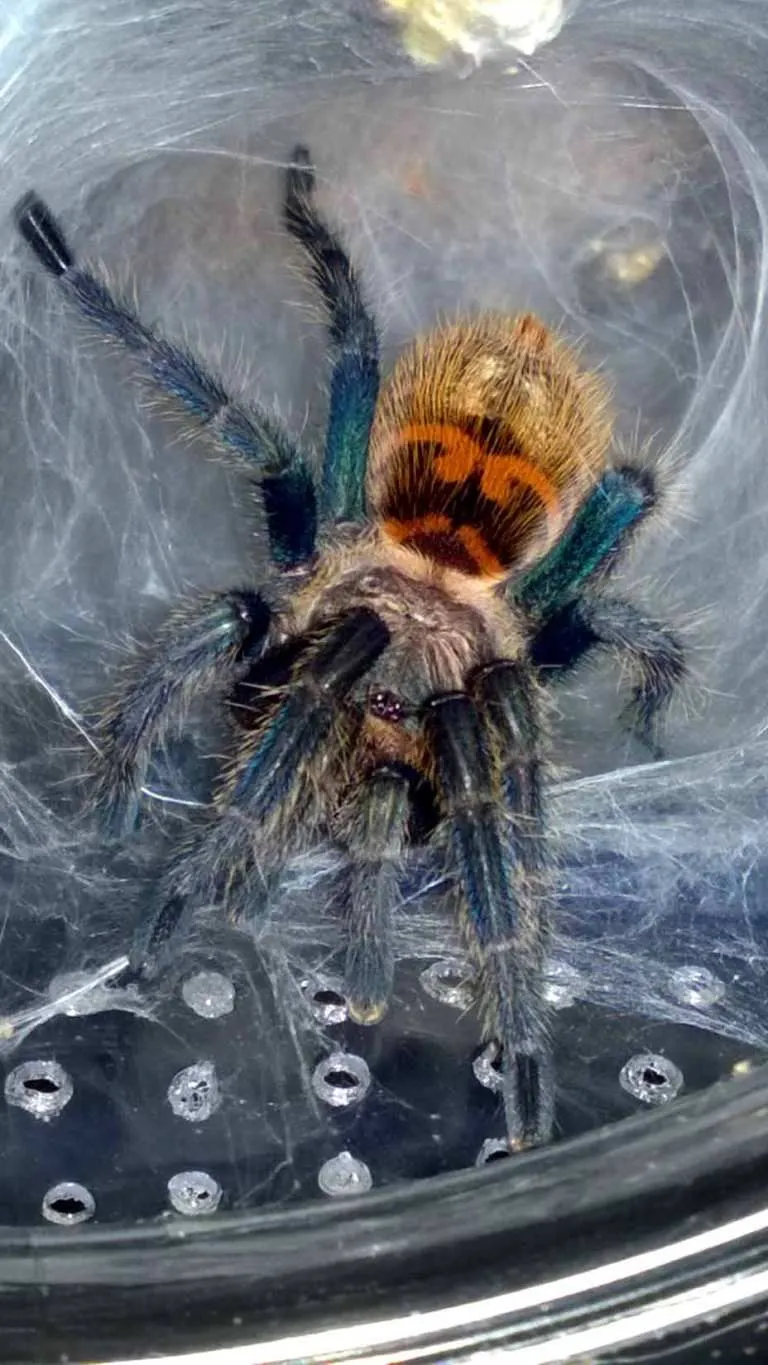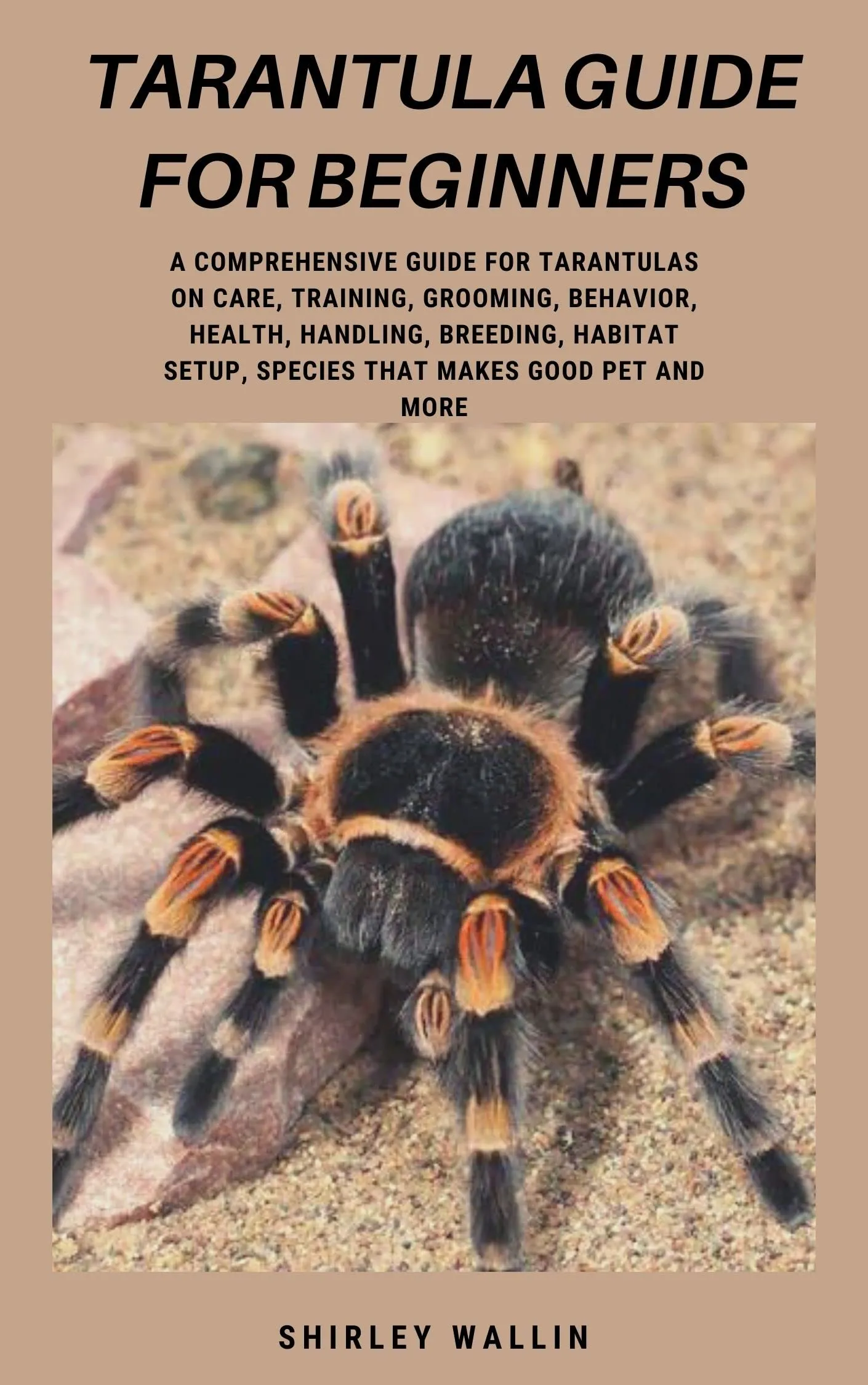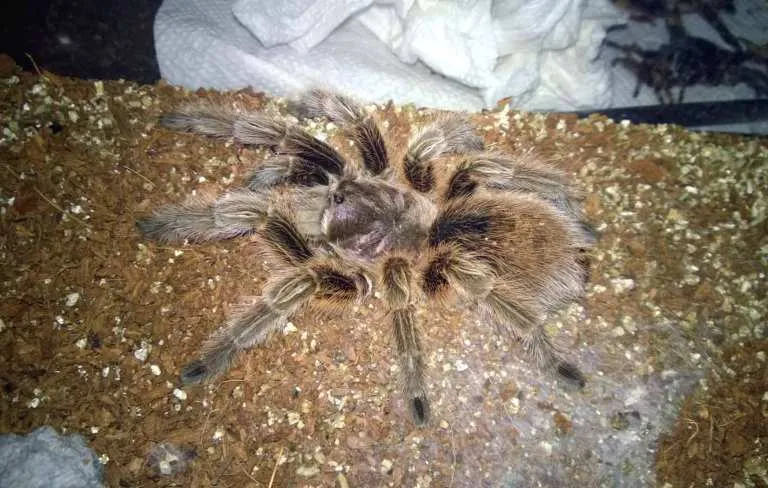Understanding Tarantulas for Beginners
Embarking on the journey of tarantula ownership can be an exciting and rewarding experience. However, before welcoming one of these fascinating creatures into your home, it’s crucial to gain a solid understanding of their needs and characteristics. Tarantulas, despite their intimidating appearance, are generally docile and make relatively low-maintenance pets compared to other exotic animals. This guide is designed to provide beginners with essential information about tarantulas, focusing on the best breeds for novices and the key aspects of their care. Understanding the basics of tarantula behavior, habitat, and diet will set you up for success and help you enjoy a thriving relationship with your new eight-legged friend. This introductory section aims to demystify tarantula ownership, making it accessible and enjoyable for those new to the hobby.
What Makes a Tarantula Beginner-Friendly
Not all tarantulas are created equal when it comes to suitability for beginners. Several factors contribute to a tarantula’s beginner-friendliness, influencing how easy it is to care for and handle. The ideal beginner tarantula will exhibit traits like a docile temperament, slow growth rate, and tolerance for minor environmental fluctuations. This section explores the key characteristics that define a great first tarantula, helping you make an informed decision when choosing your new pet. By focusing on these factors, you can increase your chances of a positive and enjoyable experience in the world of tarantula keeping, creating a comfortable environment for both you and your arachnid companion. Furthermore, selecting a suitable species significantly reduces the learning curve and minimizes the potential for stress and mistakes.
Temperament and Handling

Temperament is perhaps the most critical factor. Some tarantulas are naturally more docile and less likely to bite or display defensive behaviors like kicking urticating hairs (tiny irritating hairs). Beginner-friendly species are usually more tolerant of handling, though it’s generally recommended to minimize handling, as it can be stressful for the tarantula. Researching the specific temperament of a tarantula breed is essential before purchase, as this directly impacts the ease of interaction and overall experience. Understanding these behaviors will allow you to safely and confidently interact with your tarantula, creating a stronger bond while ensuring the well-being of the animal.
Size and Growth Rate
The size and growth rate of a tarantula affect enclosure needs and feeding frequency. Faster-growing species require more frequent feeding and will outgrow their enclosures more quickly. Slower-growing tarantulas are often preferable for beginners because they require less frequent maintenance and provide more time to learn about tarantula care without being overwhelmed. Smaller species are also generally easier to manage in terms of space and resource requirements. This aspect of tarantula care is crucial for beginners to grasp since it directly influences the initial setup and ongoing maintenance responsibilities. Proper planning ensures a suitable environment as the tarantula matures.
Care Requirements
Care requirements encompass several factors, including habitat setup, humidity levels, temperature regulation, and feeding schedules. Species with simpler care needs are best for beginners. For example, those that tolerate a wider range of humidity and temperature are less susceptible to errors. Researching and understanding the specific environmental requirements of a particular tarantula species before acquisition is vital. A tarantula thrives in the appropriate environment that replicates its natural habitat. This proactive approach helps prevent stress and health issues, ensuring a healthy and content pet.
Top 5 Beginner-Friendly Tarantula Breeds

Selecting the right species is the most critical step in starting your tarantula-keeping journey. The following five breeds are renowned for their docility, manageable care requirements, and overall suitability for beginners. Each tarantula brings its unique charm and characteristics, making this list an excellent starting point for new enthusiasts. The selection includes common, easy-to-find species that offer a rewarding experience with minimal challenges, allowing you to enjoy the fascinating world of tarantulas without undue difficulty. Carefully researching these breeds will help you make an informed decision and choose the perfect pet for you.
The Chilean Rose Hair Tarantula
The Chilean Rose Hair (Grammostola rosea) is one of the most popular tarantulas for beginners, and for good reason. They are known for their docile temperament and tolerance of handling, making them less prone to biting or defensive behaviors. Their gentle nature and overall hardiness make them ideal for novice keepers. These tarantulas are also relatively slow-growing, offering ample time to learn the ropes of tarantula care. Their gentle disposition and easy-going nature make them a fantastic introduction to the world of tarantula keeping.
Appearance and Characteristics
Chilean Rose Hair tarantulas typically have a reddish-brown coloration with pinkish hairs, giving them their name. They grow to a moderate size, with females reaching up to 6 inches in leg span, and males slightly smaller. These tarantulas are known for their calm demeanor and are less likely to kick urticating hairs, reducing the risk of skin irritation during handling. Their appearance is attractive, making them a visually appealing pet, and their calm nature makes them a pleasure to observe. Their overall characteristics make them highly desirable for those new to the hobby, creating a rewarding experience for the owner.
Care and Habitat

Caring for Chilean Rose Hair tarantulas is straightforward. They require a terrarium with a substrate of coco fiber or peat moss, a shallow water dish, and a hide for security. The humidity should be kept between 60% and 70%, and the temperature between 70°F and 80°F. Feeding typically involves offering insects like crickets or mealworms once or twice a week. Their resilience and simple needs make them a great pet, allowing beginners to learn the essentials of tarantula care without complexity. Regular maintenance, including cleaning and water changes, is crucial for their health and happiness.
The Mexican Red Knee Tarantula
The Mexican Red Knee (Brachypelma hamorii) is another favorite among beginners. This species is known for its striking appearance and relatively docile nature. Although they can be more skittish than the Chilean Rose Hair, they are generally not aggressive and are less likely to bite. The Mexican Red Knee is renowned for its longevity, with females often living for 20-25 years, offering a long-term commitment for keepers. Their combination of beauty and manageable care makes them a rewarding choice for beginner tarantula owners.
Appearance and Characteristics
The Mexican Red Knee is famous for its distinctive coloration, featuring black legs with vibrant red-orange bands at the joints. They can grow to a leg span of up to 6 inches, and their striking appearance makes them highly sought after by enthusiasts. Their calm demeanor and impressive appearance contribute to their popularity as pets. These tarantulas are visually appealing and typically exhibit less aggressive behavior. Proper care and handling enhance the enjoyment and safety of interaction with this breed.
Care and Habitat

Their care requirements are similar to the Chilean Rose Hair. They require a terrarium with a substrate like coco fiber or peat moss, a hide, and a water dish. Humidity should be maintained between 60% and 70%, and the temperature should be kept between 70°F and 80°F. Feeding frequency is similar, with insects offered once or twice a week. The overall care routine is straightforward, making this species an excellent option for beginners. Regular monitoring and maintenance, including substrate changes, are essential for a healthy environment.
The Curly Hair Tarantula
The Curly Hair tarantula (Tliltocatl albopilosus) is prized for its unique appearance and relatively calm temperament. They are known for their docile nature and are less prone to biting. Their distinctive curly hairs, which appear after molting, add to their visual appeal. The Curly Hair tarantula’s hardiness and forgiving nature make it an excellent choice for new owners. Their easygoing disposition and striking appearance make them a great option for beginners looking for an appealing and low-maintenance pet. Understanding their needs and behaviors ensures a positive experience for both the owner and the tarantula.
Appearance and Characteristics
These tarantulas have a dark brown coloration with a covering of curly hairs. They typically grow to a leg span of 5-6 inches and are quite hardy. The curly hairs give them a unique and attractive look. Their relatively calm behavior and low maintenance make them ideal pets for novices. This appealing appearance combined with their manageable care requirements makes them a wonderful addition to any beginner’s collection. By understanding their characteristics, one can provide optimal care and enjoy the full experience of keeping a Curly Hair tarantula.
Care and Habitat

The Curly Hair tarantula needs a terrarium with a substrate like coco fiber or peat moss, a hide, and a water dish. Humidity should be kept between 60% and 70%, and the temperature between 70°F and 80°F. They are known to be quite adaptable to various conditions, making their care relatively simple. Feeding is typically once or twice a week, and their resilience makes them a great choice for beginners. Regular attention to their environment and diet is crucial for their well-being and longevity, ensuring a happy and healthy pet.
The Pinktoe Tarantula
The Pinktoe tarantula (Avicularia avicularia) offers a different experience for beginners. These arboreal tarantulas are known for their vibrant coloration and semi-aggressive nature. They are often more skittish than terrestrial species but are usually not aggressive. Their unique arboreal lifestyle and striking appearance make them an exciting pet for new owners. Understanding their needs and behavior is vital to provide the right care, ensuring they thrive in their environment. They can provide an amazing learning experience if properly cared for.
Appearance and Characteristics
The Pinktoe tarantula is easily recognized by its striking pink toe pads and a dark body. They also have iridescent hairs that give them an attractive appearance. They are arboreal and build webs, adding a unique aspect to their environment. The colorful appearance and arboreal nature make them popular. Their unique appearance and interesting behaviors provide a fulfilling experience for those new to tarantula keeping. Careful observation and proper care are key to enjoying this beautiful species.
Care and Habitat

These tarantulas require an arboreal setup, including a tall enclosure with a substrate, like coco fiber or sphagnum moss, and branches or artificial plants for climbing. The humidity should be higher, around 70%-80%, and the temperature around 75°F-85°F. They need a shallow water dish and benefit from regular misting. Feeding is similar to other species, with insects offered once or twice a week. Their care, slightly more involved than other species, still remains manageable for beginners. Providing the proper environment is crucial for their well-being and active lifestyle, ensuring that they can thrive in your care.
The Brazilian Black Tarantula
The Brazilian Black (Grammostola pulchra) is another excellent option for beginners. These tarantulas are known for their docile temperament, beautiful black coloration, and relatively slow growth. They are less prone to biting and can be handled, making them a great choice for novice keepers. Their overall hardiness and easy-going nature make them ideal for anyone new to the hobby. These characteristics make the Brazilian Black a rewarding choice, providing a positive introduction to tarantula ownership.
Appearance and Characteristics
These tarantulas are characterized by their stunning black coloration, which intensifies with each molt. They grow to a moderate size, with females reaching up to 6-7 inches in leg span. Their calm demeanor and beautiful appearance make them highly desirable. This combination of beauty and gentleness makes them an excellent choice for beginners. They’re relatively easy to care for and provide a visually striking pet. The simplicity of their care combined with their elegant appearance makes them a great option.
Care and Habitat
The Brazilian Black Tarantula requires a terrarium with a substrate like coco fiber or peat moss, a hide, and a water dish. Humidity should be kept between 60% and 70%, and the temperature between 70°F and 80°F. Feeding is typically once or twice a week. Their care is quite similar to other terrestrial species on this list, making them easy to manage. The straightforward care requirements combined with their beautiful appearance make them a fantastic option for beginners, creating a positive and enjoyable experience. Regular maintenance, including cleaning and water changes, is vital for maintaining a healthy environment.
Essential Care Tips for Beginner Tarantulas
Proper care is essential for the health and well-being of any tarantula. Regardless of the species, adhering to basic guidelines can significantly improve your pet’s quality of life and ensure your success as a tarantula keeper. These care tips cover essential aspects like enclosure setup, substrate maintenance, and feeding routines, helping you provide the best possible environment for your new pet. By following these simple steps, you can create a comfortable and enriching habitat, allowing your tarantula to thrive. Careful attention to these areas will lead to a rewarding and enjoyable experience for both you and your tarantula.
Choosing the Right Enclosure
The enclosure should be appropriately sized for the tarantula’s species and size. Terrestrial tarantulas need more floor space than height, while arboreal species require a tall enclosure. Make sure the enclosure has secure ventilation, and the lid is escape-proof. The material should be transparent to enable easy viewing of the tarantula. Providing the correct size of enclosure prevents stress and ensures that your pet has ample room. A well-designed enclosure not only ensures the well-being of the tarantula but also enhances the viewing experience, allowing you to observe your pet in comfort and safety.
Substrate and Humidity
The substrate should be appropriate for the species, typically consisting of coco fiber, peat moss, or a mix. The substrate helps to maintain humidity and allows the tarantula to burrow. The humidity level must be maintained at the appropriate level for the specific species, using a hygrometer to monitor. Regularly misting the enclosure or providing a water dish can help with humidity. Understanding the importance of substrate and humidity is crucial for tarantula keeping since it directly impacts the tarantula’s health and ability to thrive. Providing the right substrate and maintaining the correct humidity ensures a healthy environment and happy pet.
Feeding Your Tarantula
Feed your tarantula appropriately-sized insects, such as crickets or mealworms, depending on its size. Offer food once or twice a week, adjusting frequency based on the tarantula’s age and growth. Remove uneaten food within 24 hours. Always provide fresh water in a shallow dish. A proper feeding regimen ensures the tarantula receives the nutrients it needs to grow and thrive. Regularly monitor the tarantula’s condition to adjust the feeding schedule as needed. Proper nutrition is key to the health and longevity of your tarantula, contributing to its overall well-being.
Water and Hydration
Provide fresh, clean water at all times in a shallow dish. Ensure the water dish is stable and cannot be easily tipped over. Refill the water dish regularly. Water is essential for the tarantula’s health and hydration. It enables them to molt successfully and keeps them healthy. The consistent availability of fresh water is vital for their health and survival. Proper hydration is essential, and monitoring water levels ensures the continued well-being of your pet.
Common Mistakes to Avoid
Even with the best intentions, beginners can make mistakes that can harm their tarantulas. Recognizing these common pitfalls and taking steps to avoid them is crucial for successful tarantula keeping. Avoiding these issues can prevent avoidable stress and complications, ensuring your pet’s happiness and well-being. By understanding these common errors and learning how to correct or prevent them, you can create a more positive experience for both you and your tarantula, allowing you to build a long-lasting and rewarding relationship. Being aware of and avoiding the mistakes can go a long way in creating a suitable environment.
Improper Handling
Handling tarantulas unnecessarily can cause stress and can potentially lead to bites or defensive behaviors like kicking urticating hairs. Always wash hands before and after handling. It’s generally recommended to minimize handling, particularly for beginners. Observing the tarantula in its enclosure is a safer and less stressful way to enjoy your pet. Careful handling reduces the risk of injury to both the tarantula and the owner. Proper handling practices can reduce stress and risks and promote the overall well-being of your tarantula. Minimizing handling is often the best approach for safety.
Overfeeding
Overfeeding can lead to health problems, such as obesity and difficulties with molting. Offer appropriate-sized prey and avoid overfeeding, particularly juveniles. The abdomen should be slightly rounded but not excessively large. Overfeeding can shorten the lifespan and hinder their ability to thrive. Monitoring feeding frequency and prey size allows for a healthy diet. Careful attention to feeding habits is essential for the long-term health and happiness of your tarantula. Maintaining a balanced diet is crucial for optimal health.
Insufficient Humidity
Insufficient humidity can cause dehydration and molting problems. Monitor humidity levels and adjust as needed, using a hygrometer. Provide a water dish and mist the enclosure as needed, especially for tropical species. Maintaining the correct humidity levels is essential for the tarantula’s health and proper molting. This is particularly true for species that come from humid environments. Insufficient humidity can cause a variety of health problems. Careful monitoring and maintaining the correct humidity levels ensure the well-being of your pet.
Conclusion
Keeping a tarantula can be a rewarding experience, particularly if you choose a beginner-friendly species and follow the recommended care guidelines. By selecting a docile species, providing a suitable habitat, and avoiding common mistakes, you can create a thriving environment for your pet. Remember that patience and research are key to success. Enjoy the journey of tarantula ownership, and embrace the fascinating world of these incredible creatures. With proper care and attention, your tarantula can provide years of enjoyment and become a unique and beloved pet. Starting your tarantula-keeping journey with the right information will ensure that you are well-prepared and able to provide a healthy and happy life for your new pet.
